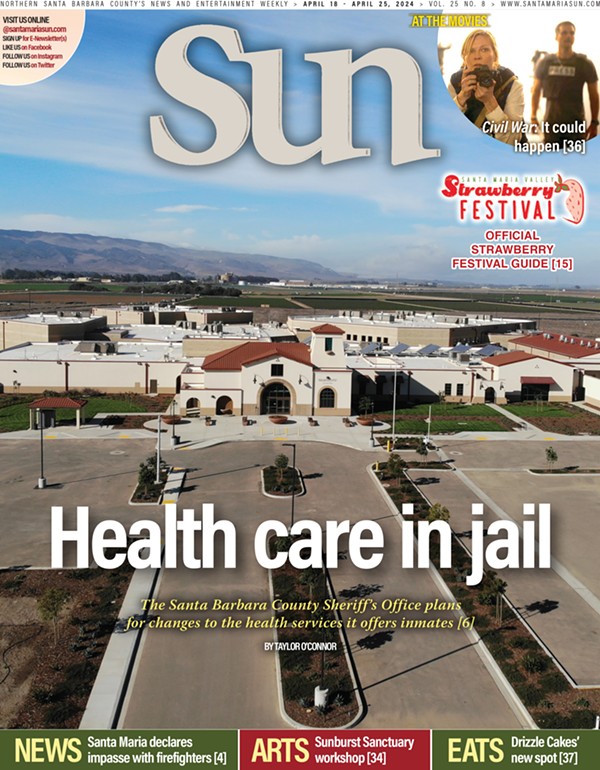A proposal to develop more than 15 acres of new water reservoirs in the Cuyama Valley stirred division among local farmers and county officials at a recent public hearing.
During the Santa Barbara County Planning Commission’s May 10 meeting, county staff presented findings to deny the project, which would include the construction of three frost ponds at North Fork Ranch to store water for its vineyards.
The ranch is located within the Cuyama Valley groundwater basin, an area listed as “critically overdrafted” by the California Department of Water Resources. Staff determined that the site is unfit to accommodate the proposed frost ponds partly due to the overdraft conditions documented in the area.
During public comment, Andy Caldwell, executive director of the Coalition of Labor, Agriculture, and Business (COLAB), used air quotes while questioning one finding in the staff report.
“The Planning Commission finds that the proposed project is not compatible and subordinate to ‘the agricultural character’—what the heck does that mean?” Caldwell said. “Every vineyard in the region has a frost pond but somehow the frost pond here is not subordinate to the agricultural character?”
Caldwell was referring to staff’s finding that “the proposed project is not compatible and subordinate to the agricultural character of the project area due to the size and number of reservoirs proposed.”
The three proposed frost pond reservoirs would occupy an area that totals approximately 15.6 acres and would result in groundwater losses of 31-acre-feet per year, according to the staff report. Ana Citrin, an environmental and land use attorney, reiterated that finding in response to Caldwell during public comment.
“We’ve heard ‘every vineyard has a frost pond.’ Well, every vineyard does not have 15.6 acres of frost ponds, without the clearly demonstrated need,” Citrin said. “In many ways, this project just does not make sense, and the significant impact to the groundwater basin and to biological resources are reasons why denial of this project makes sense.”
During public comment, Cuyama resident and farmer Stephen Gliessman said that future projects proposed for sites in the Cuyama Valley groundwater basin should promote farming approaches that “save water, use less water, and depend more upon what nature gives us rather than what we extract from the past, below ground.”
“As we keep saying, the big issue is water, and Cuyama historically does not have water,” said Gliessman, the owner of Condor’s Hope Ranch, a 5-acre dry farming operation in Cuyama. “Our only source of water, other than rainfall, is groundwater. There’s no pipelines. There’s no reservoirs. There’s no permanent surface water. We have to take care of that groundwater.”
The proposed project at North Fork Ranch was ultimately denied by the Santa Barbara County Planning Commission, but not unanimously.
“This commission lacks the evidence, the technical evidence, and analysis to move forward with a denial of this project,” Planning Commissioner Larry Ferini said. “Every one of these conditions seems to be dependent on saying that they’re going to be using too much water to protect their crop without really showing the relevance of how insignificant that amount of water can be in looking at the long-term averaging and balancing of that use.”
“This is a perfect instance of how we can differ with people we deeply respect,” Planning Commissioner C. Michael Cooney said before motioning to deny the project, which carried a 3-1 vote.
—Caleb Wiseblood













